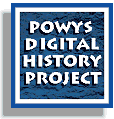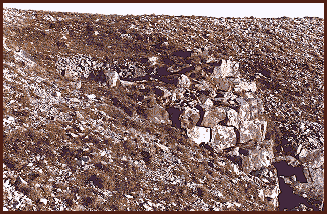
Upper Swansea Valley
Craig-y-nos Castle 1
by Len Ley
Click here also to see his poem on the valley and its people
The limestone deposits stretching across the northern ridge of the South Wales coal field extend westward to the Tawe valley and beyond. At Glyntawe they crown the surrounding hills and their peaks have been exploited for several centuries.
Lime kiln
on Cribarth
From the collection
of the late
John Morris
 Limestone
was quarried from the Cribarth and burnt in huge kilns and then
mixed with mortar or spread on the land. The quarries once supplied
several furnaces at Ynyscedwyn Iron Works and increasingly large
quantities of the stone were taken down to the valley by pack
animal.
Limestone
was quarried from the Cribarth and burnt in huge kilns and then
mixed with mortar or spread on the land. The quarries once supplied
several furnaces at Ynyscedwyn Iron Works and increasingly large
quantities of the stone were taken down to the valley by pack
animal.Captain Powell was called to the Bar and later served with the army in India. His maternal grandfather had been a wealthy surgeon with the east India Company and his father had once practised in London before returning to his birthplace and acquiring Pentre Cribarth Farm.